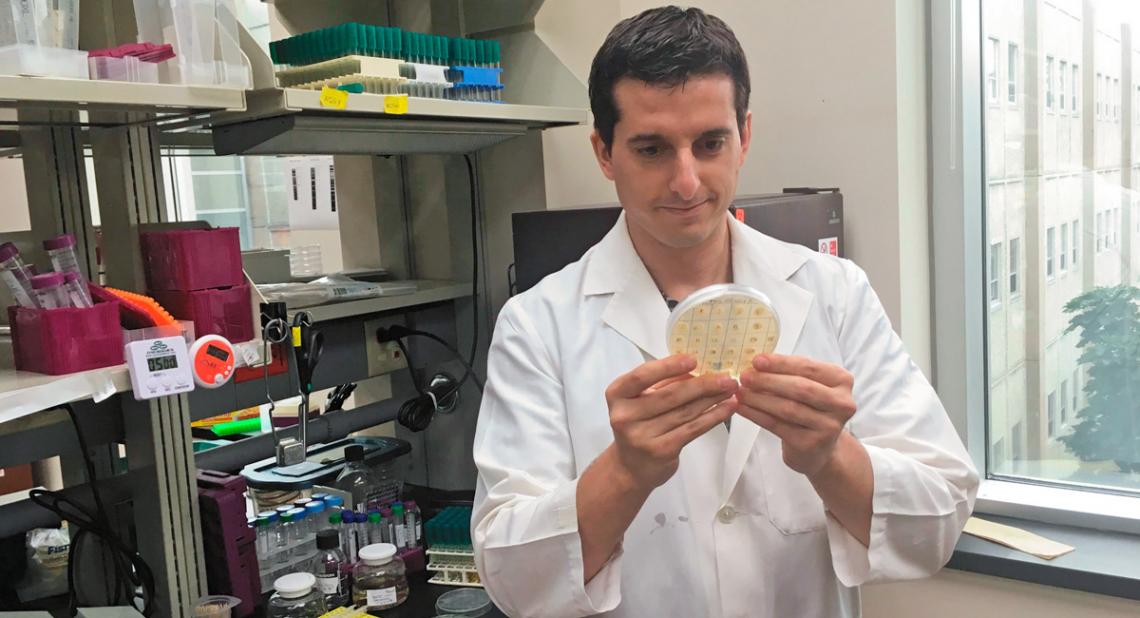
In the world of biofuels research, the baker’s yeast Saccharomyces cerevisiae gets a lot of love, with scientists commonly tweaking the yeast’s fermentative qualities to enhance ethanol production. Researchers at the Great Lakes Bioenergy Research Center (GLBRC), however, are expanding that focus to a broad range of wild yeasts in the genus Saccharomyces.
“We decided to explore the biodiversity of yeasts,” says David Peris, a postdoctoral researcher in the University of Wisconsin–Madison’s Laboratory of Genetics. “We’d like to harness the power of that biodiversity to discover and develop new yeast strains that can better address challenges within the cellulosic biofuels industry.”
More specifically, the researchers are interested in the potential of hybridization – the crossing of two different yeast species to produce hybrids. Researchers recently discovered that interspecies hybridization has played a significant role in the success of beer brewing. And that revelation has biofuels scientists hoping that a similar process could help them address goals of the biofuels industry, such as enhancing yeast tolerance of industrial toxins; encouraging yeast to consume xylose, a difficult-to-ferment plant sugar; and increasing ethanol yield.
“We all say that S. cerevisiae is the yeast of bread and brewing,” says Chris Hittinger, assistant professor of genetics at UW–Madison. “In fact, only about 5% of the beer market is from S. cerevisiae – the other 95% is from these interspecies hybrids. Peris is exploring the industrial advantages that might be gained by similarly adding genes from very different yeast species to the biofuel production process.”
In a study published in the journal Biotechnology for Biofuels (March 2017), Peris describes research that began with the development of eight synthetic interspecies hybrids.
“We started with a large collection of wild yeasts having as much genetic similarity to one another as humans and chickens, really a lot of diversity,” says Peris, “and with the help of our undergraduate student Ryan Moriarty, we tested them to see which ones could grow best under the conditions used for making ethanol.”
After identifying four wild Saccharomyces strains, they crossed each of the four wild strains with two industrial strains of S. cerevisiae engineered for xylose fermentation.
In order to determine whether the newly generated synthetic hybrids could be improved by an accelerated version of natural selection called “adaptive evolution,” the scientists then exposed their six heartiest hybrids to harsh industrial conditions, requiring them to retain tolerance to both toxins and ethanol, and forcing them toward starvation if they did not consume xylose.
“When these hybrids start to grow, they multiply,” says Peris, “and as they multiply, they accumulate mutations that allow them to adapt to the industrial conditions. When we sequenced their genomes, we found rearrangements and duplications and deletions – definite signs of adaptation.”
The findings indicate that hybridization paired with adaptive evolution in the laboratory could be a valuable tool for promoting desirable industrial qualities in fermentative yeast strains.
In the short-term, the scientists plan to keep looking for untapped biofuel-related potential in the genus Saccharomyces. But over the long-term, they see their hybrid work merging with bioengineering methods. Taken together, hybridization and adaptive evolution could allow researchers to zero in on the genetic code associated with desired traits such as toxin tolerance and xylose consumption.
“One of the GLBRC’s primary goals is to generate the knowledge and techniques that could be applied by industry,” says Hittinger. “We’re exploring a novel genetic approach that’s not being used by anybody else at this time. We’ve given the initial sketch, which seems to have potential. And with more generations and different starting points, we hope to discover more benefits for biofuels.”
GLBRC is one of three bioenergy research centers established in 2007 by the Biological and Environmental Research program in the U.S. Department of Energy’s (DOE) Office of Science. GLBRC’s goal is to conduct transformational research and build the foundation of new cellulosic biofuels technology. For more information, visit www.glbrc.org or visit us on twitter @glbioenergy.